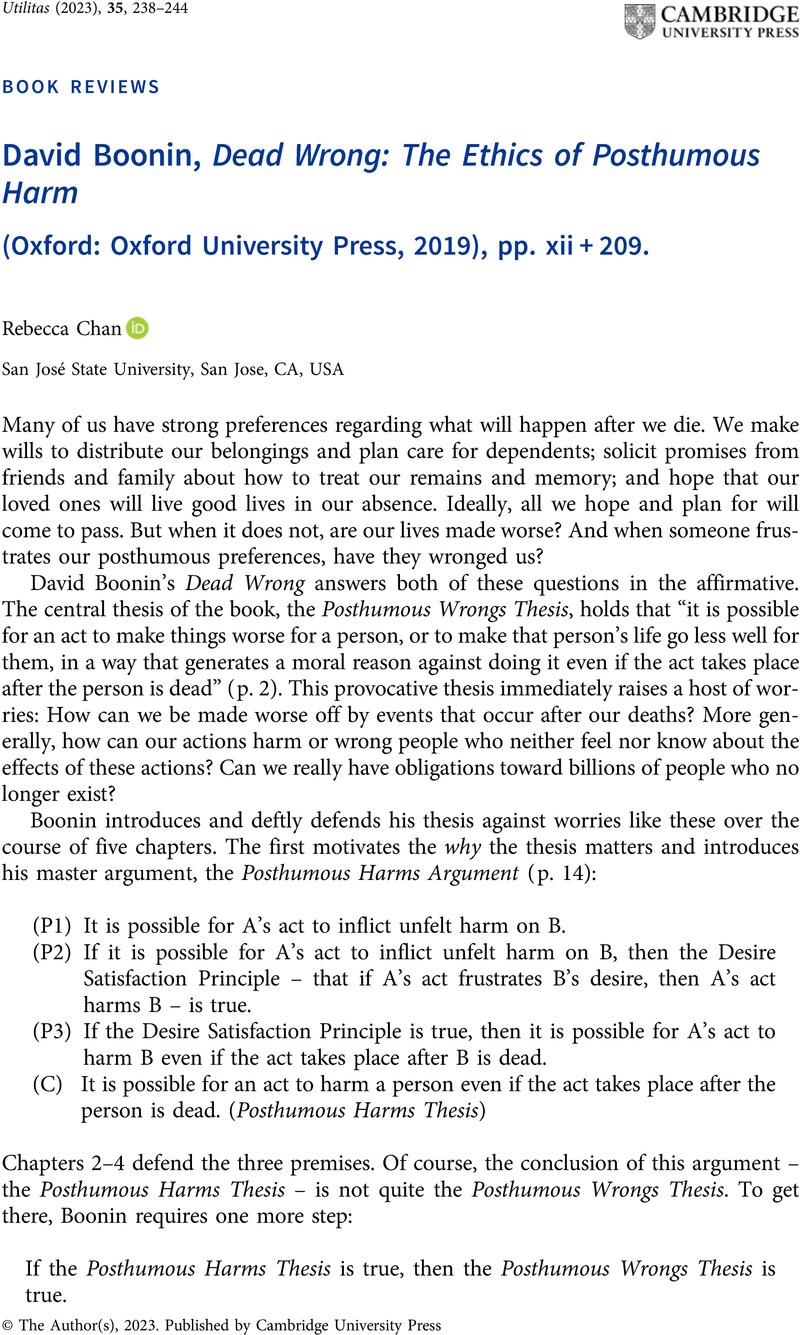No CrossRef data available.
David Boonin, Dead Wrong: The Ethics of Posthumous Harm (Oxford: Oxford University Press, 2019), pp. xii + 209.
Review products
David Boonin, Dead Wrong: The Ethics of Posthumous Harm (Oxford: Oxford University Press, 2019), pp. xii + 209.
Published online by Cambridge University Press: 11 July 2023
Abstract
An abstract is not available for this content so a preview has been provided. Please use the Get access link above for information on how to access this content.

- Type
- Book Review
- Information
- Copyright
- Copyright © The Author(s), 2023. Published by Cambridge University Press



